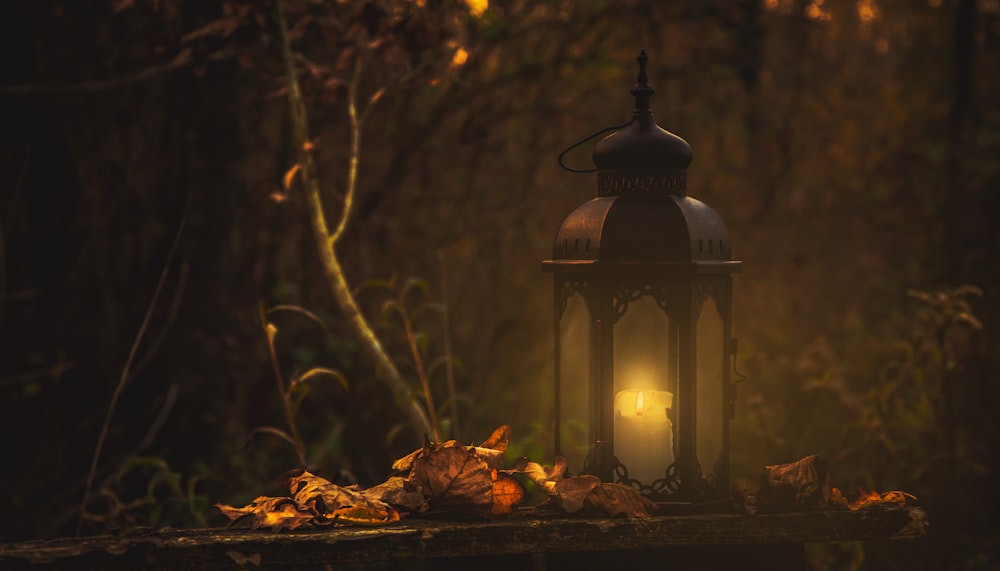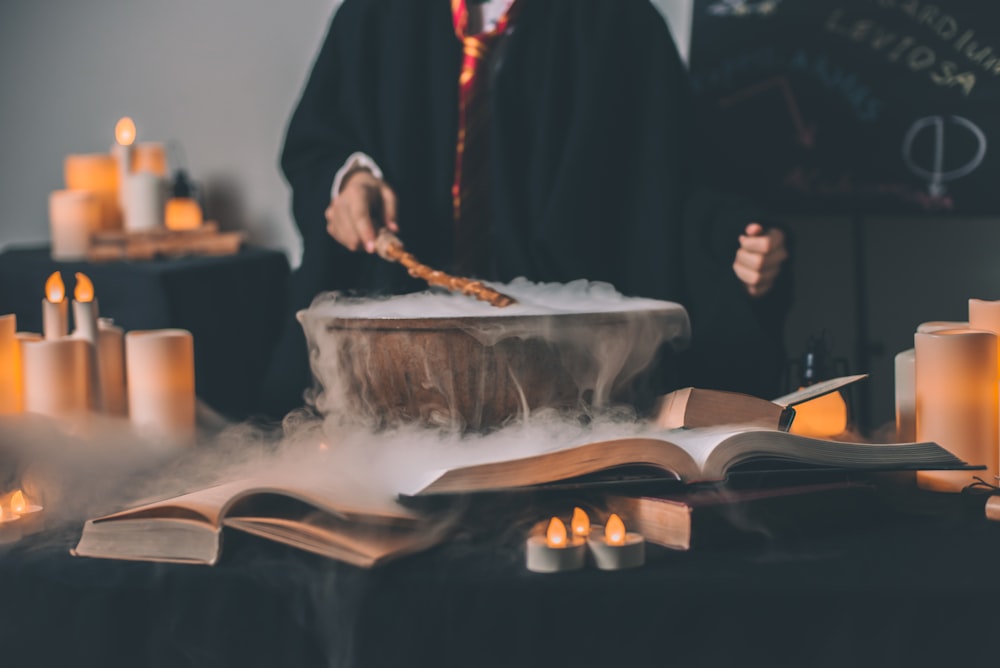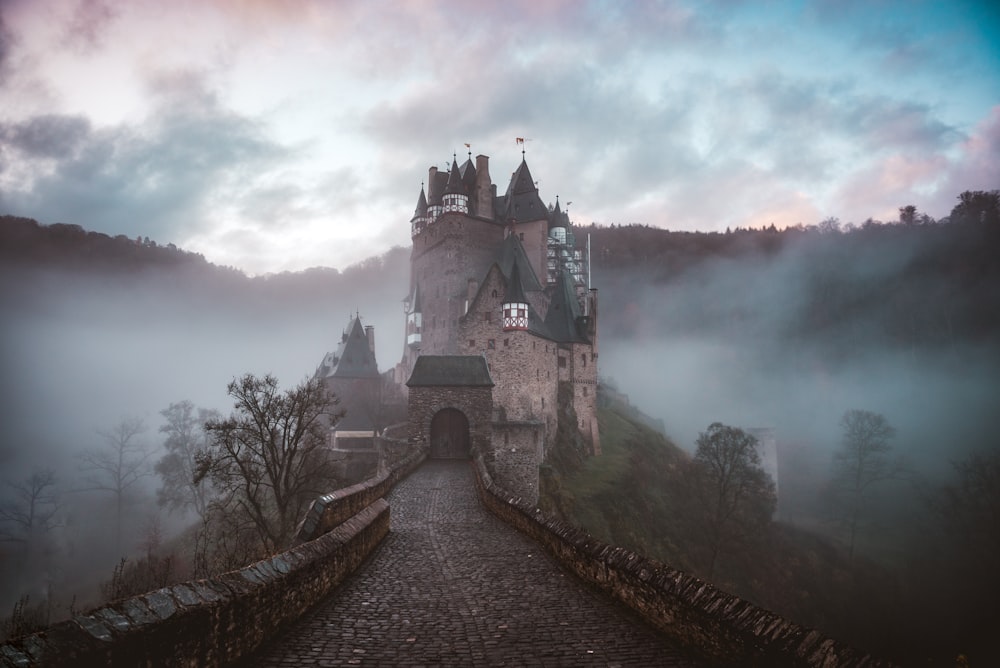
“Fantasy is silver and scarlet, indigo and azure, obsidian veined with gold and lapis lazuli. Reality is plywood and plastic, done up in mud brown and olive drab. Fantasy tastes of habaneros and honey, cinnamon and cloves, rare red meat and wines as sweet as summer. Reality is beans and tofu, and ashes at the end.”
― George R.R. Martin
As a writer, it’s never a bad idea to study the genres you’re interested in writing. Besides reading your favorite authors for inspiration, it’s always beneficial to study the elements of story writing in order to be the best writer you can be. Studying the basics (or reviewing them) can help you plan your writing and even inspire you to try some new elements in your work.
And just in case you missed it, you can click here to learn about the elements of science fiction writing!
Before we get into the elements of fantasy writing, let’s discuss high or epic fantasy vs. low fantasy, as this is an important distinction to learn if you aren’t familiar with it.

- Low fantasy: A work is considered low fantasy if magic intrudes upon an otherwise normal, realistic world and subsequently shocks its inhabitants. Low fantasy characters are usually less mythic in scope, as well, and more grounded in reality even if they possess magical powers. Cassandra Clare’s City of Bones is a great example of low fantasy, as the protagonist Clary is shattered when the Downworld intrudes upon her seemingly normal life in New York City, opening her eyes to the magic that existed right under her nose.
- High or epic fantasy: Epic fantasy is considered epic for its grand themes and the focus on the hero’s journey, usually centering on one hero or a band of heroes. Magic lives here 24/7. Tolkien’s The Lord of the Rings is considered the first (and best) work of high fantasy, as it centers around a band of heroes on a quest to defeat a clearly defined evil with a clearly defined solution.
Now that you know the difference between high and low fantasy, let’s take a look at some of the most important elements to include in your fantasy writing. If you would like to learn about some of the different genres of fantasy before you get started writing, click here!
Magic system

What is fantasy without magic?? Magic is what makes fantasy … well … fantasy. It bends the natural laws of reality so your only limitation here is your imagination.
Your story or novel will need not just magic, but a magic system. A system of magic is a set of laws that govern how magic will be used in your fantastical world. Some questions to ask to help you plan your magic system:
- How is the magical power generated? Where does it come from?
- How will the magic be used throughout the narrative?
- How will you explain how the magic works to your readers?
Read: Check out the various systems of magic in The Magicians series by Lev Grossman, such as fairy, wild, wellspring, and god magic, each with distinct powers.
Worldbuilding

The second most important aspect of fantasy writing is worldbuilding. Besides science fiction, fantasy has some of the best settings ever created in the history of literature. The world affects the character, and the character affects the world. You might even say the setting is like a character in and of itself.
This is where your best descriptive writing comes in. You want to show, not tell. Immerse your readers from the first sentence and make your world believable.
Establish the type of world you want, and describe its environment, culture, laws, the language, its history, and its inhabitants with such detail the reader wants to book an Airbnb right away. Think of Middle Earth, Narnia, and Wonderland for great examples of exquisite worldbuilding.
Read: Venture outside of Narnia and explore the Lone Islands, where the stars are alive and move at will in The Voyage of the Dawn Treader by C.S. Lewis
Complex characters

Let’s face it, without engaging, complex characters we hate to love and love to hate, reading fiction wouldn’t even be worth it. We come for the stories and stay for the characters.
High fantasy is known for its stark division between “good” and “evil” characters for the most part. But low fantasy allows you as a writer to confound your readers with morally gray characters that are more human than say, Gandalf and his moral righteousness or Sauron and his black, black soul.
Read: Study the character of Ser Jaime Lannister for one of the best complex character arcs in the A Song of Ice and Fire series by George R.R. Martin
Central conflict

It goes without saying that every story or novel needs a conflict. Without it, our morally ambiguous characters would be twiddling their thumbs for 400 pages. Conflict is the driving force in any story, no matter if it’s in a book or on the screen.
Conflict goes beyond the outward tension that drives the story; it also refers to:
- Inner conflicts within the characters themselves as they navigate the world around them
- Conflicts between characters
- Conflicts between the main character and a large-scale, external force
Read: Take a look at Bilbo’s inner and large-scale conflicts as he struggles with possessing the One Ring in The Hobbit by J.R.R. Tolkien
System of government

Even in fantasy, you still need some sort of established power structure, like a system of government. When you begin worldbuilding, ask yourself: who holds the power in this world? It might be a single ruler, such as Sauron in Middle Earth, or Jadis, the White Queen who ruled with a frozen iron fist Narnia. Or you might prefer a religious theocracy, like in Charlie Holmberg’s Numina series.
Once you decide, work from the top down to figure out the place your characters have within this system of government, and whether or not they intend to burn it down to ashes.
Read: Shadow and Bone by Leigh Bardugo has a great concept for methods of both magical governments and “mundane” political systems.